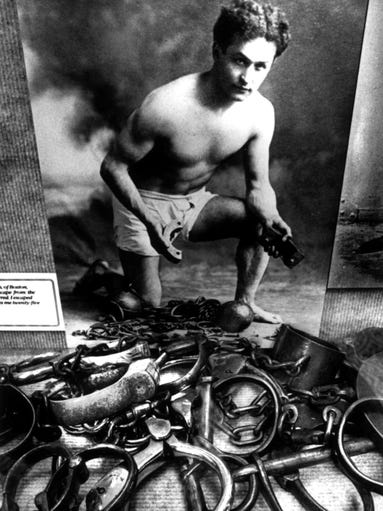

Here, some of the world’s greatest writers have entered the many worlds of magic: the bright, happy world of exciting stage shows, the darker world of crime and murder, and the velvet black world of unrelenting terror. Otto Penzler tells us, “The magicians in this book take many forms …. For that reason alone the book is worth seeking out. Gibson, Stanley Ellin, and Erle Stanley Gardner: an impressive representation of some of pulp fiction’s greatest practitioners. The authors in Whodunit? Houdini? include Clayton Rawson, Carter Dickson, Frederick Irving Anderson, William Irish, Walter B. While magic is central to each story, the solutions (with one exception) are as down-to-earth as one could hope for (the exception, by John Collier, of course being sui generis).ĭespite the title, Harry Houdini never does appear in propria persona but his spirit seems to thread its way through this anthology, especially in “One Night in Paris” in which Houdin/Houdini lore becomes a large part of the rationale for the story’s sometimes feverish action and resolution. This is an anthology of thirteen mystery stories dealing with the common theme of magic yet this is not a book of fantasy. ET/PT on HISTORY.OTTO PENZLER, Editor - Whodunit? Houdini? Thirteen Tales of Magic, Murder, Mystery. The UnXplained with William Shatner airs Saturdays at 8 p.m. When they pulled the coffin out of the water, the paramedics were able to revive him and save his life, according to Gunnarson during the History Channel special. He was underwater for nearly four minutes. His body was later found about half a mile from the site of the trick.Īnother escape artist who attempted his version of the trick was Dean Gunnarson, who was lowered into a Canadian river shackled inside a weighted coffin in 1983. According to the BBC, the crowd began panicking when Lahiri did not appear after more than 10 minutes in the water. One such magician was Indian escape artist Chanchal Lahiri, stage name Mandrake, who drowned in June 2019 attempting this very stunt. Even master escape artists, many of whom spent decades studying Houdini’s tricks and techniques, are still trying to figure it out - often with deadly results.” “While there are many theories, no one knows for certain how Houdini pulled off his overboard box escape. How did he do it?” said Shatner in the special.

“Over the next several years, Houdini would repeat this incredible escape countless times, for audiences all over the world. When the box was hauled up, it was always still locked and the handcuffs were found inside, closed. He emerged from the water less than a minute later.

He did it first in New York’s East River where he was handcuffed, shackled, locked up in a large wooden crate, and dropped into the water. On the season premiere of The UnXplained with William Shatner, the History Channel show examines Houdini’s famous escape from an underwater box. Houdini Bridge Jump with Handcuff Escape (1907) Houdini’s Underwater Packing Crate Stunt Is Extremely Dangerous But Snopes has basically debunked this urban legend because “appendicitis following blunt abdominal trauma quite rare.” However, it certainly could be that Houdini delayed seeking medical treatment for his appendicitis because he assumed his abdominal pain was because of the punches and not because of another medical factor. There is a tale that Houdini’s appendicitis was brought on by being repeatedly punched in the stomach by a McGill University student named Gordon Whitehead when Whitehead was questioning Houdini about his rumored strength. Houdini was hospitalized after his October 24 performance and never left the hospital. He reportedly had a 104-degree fever at the time. In fact, he took the stage the night before he was hospitalized with appendicitis. He actually began experiencing pain from his appendix more than a week earlier but did not seek medical attention. On Halloween of 1926, Houdini died in Detroit’s Grace Hospital from peritonitis, an inflammation of the internal wall of the abdomen, which was a complication from his ruptured appendix. More mysterious than any of his escapes, however, was the circumstance of his final act: his death. For 35 years, from 1891 until his sudden death on October 31, 1926, Houdini amazed audiences with seemingly impossible escapes that became increasingly dangerous. The Mysterious Death Of The Great Harry Houdini Harry Houdini is internationally famous as the world’s foremost magician and escapologist.


 0 kommentar(er)
0 kommentar(er)
